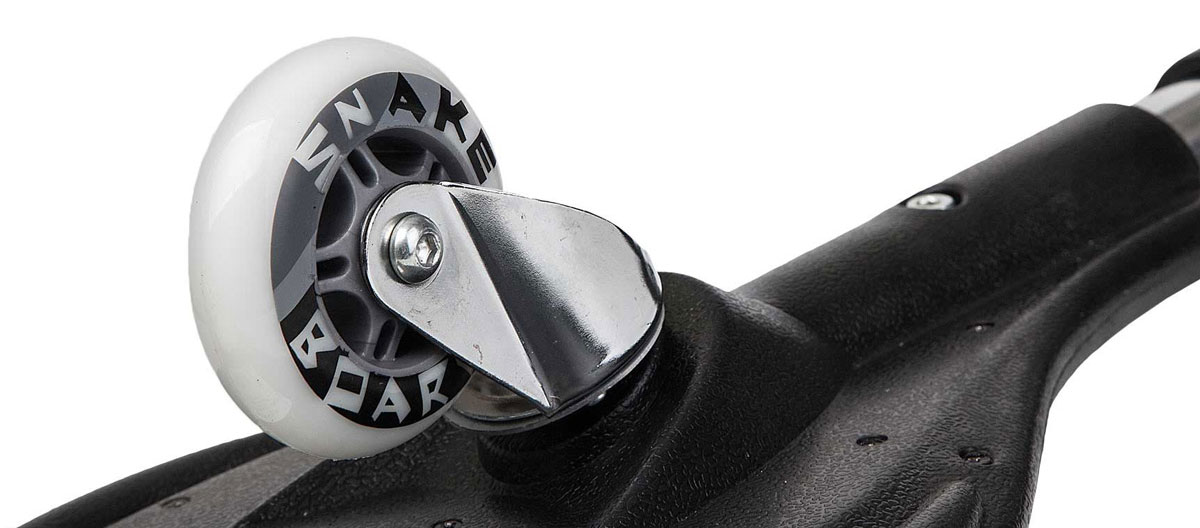Waveboards
Choosing a waveboard
Riding a waveboard is very beneficial to the human body.
It is a smooth movement, which doesn’t put a strain on the joints, strengthens muscles, helps with coordination and balance. Those are basics for other sports like snowboard, skiing, skating etc.
Basic ride can do practically everyone – even though they are not remarkable in other sports. Another benefit of the waveboard is that you can ride in any smooth and hard surface (asphalt, concrete, parquet).
Waveboard wheels
Getting high-quality wheels pays of if you will use the waveboard often. It is important to know that waveboard, unlike skateboard or in-line skates, has only two wheels. Because of this, they are extremely stressed, especially the last one. Remember, poor quality wheels in hot summer asphalt can wear off in few hours.
How to know good quality wheels? It is recommended to focus on the brand first. Ideally, brand of wheels should match the brand of the waweboard. Then, we can be completely sure that these wheels are made for waveboard ride.
Hardness and size of wheels is also very important. Suitable wheel hardness for riding the waweboard is in the 84 – 90A range. Softer wheels will wear off much more quickly.
As for the size of the wheels, they should be around 76 – 80 mm. For recreational and sporadic riders or children, no name wheels should be enough. After partially wearing off the wheels, we recommend swapping the front and the back wheel. The back wheel, for said reasons, wears off more quickly.

Waveboard caster
Caster is a part to which the wheel is attached. It is one of the most stressed parts of the waveboard. Two properties are particularly important.
a) Material type and strength
Ideally, caster is made of steel. There are also casters made of aluminium alloy that depend on the durability of alloy. Caster that is not good quality can crack, which would cause an injury.
b) Bearings
Bearings should be resiliently encapsulated. They need to handle extreme load during the ride alone and especially jumps. Non-branded and cheaper bearings have just slightly riveted bearing cases, and their quality can be lower.
The caster can wear-off sooner, which you can tell if the caster starts to get jammed while turning. Then it’s necessary to change it. And again, it is necessary to consider the intensity of use and financial possibilities. With cheaper bearings, we must count on the lower lifespan that can be enough for some.
Waveboard shapes
a) Waveboard decks
The deck, on which you stand, should be concavely curved. That means that their edges should be higher than the middle of the deck. This helps the riders to keep the stability while riding.
b) Traction plates
Traction plates make sure that the waveboard doesn’t go in excessive tilt in sharp turns or while doing tricks, which often leads to the fall. Good waveboard should have them set in the right angles.
c) Torsion bar
Torsion bar, which connects two waveboard decks, should ideally be steel. The right stiffness of the bar and quality of the material has the biggest impact on powering the waveboard.

Waveboard surface
Surface of the waveboard is important for the grip of driver’s soles on the board. Plastic protrusions (so called 3D grip) should be wide enough and pointy to make the soles hook-up on them.
If the surface is not made well, the soles could slip. This can also result in falling. You should remember that when riding on a wet surface, wet soles will slip more.
